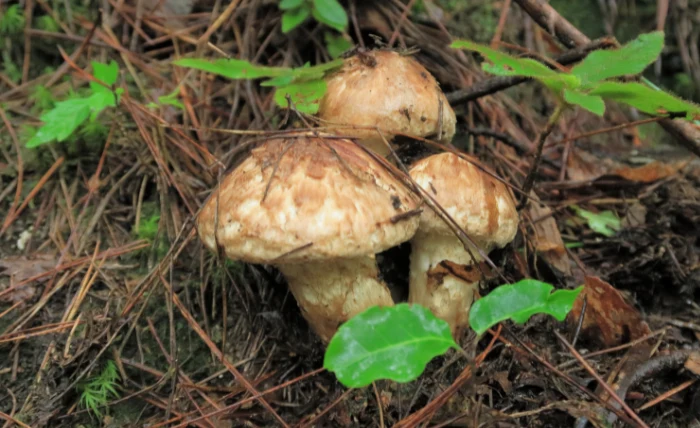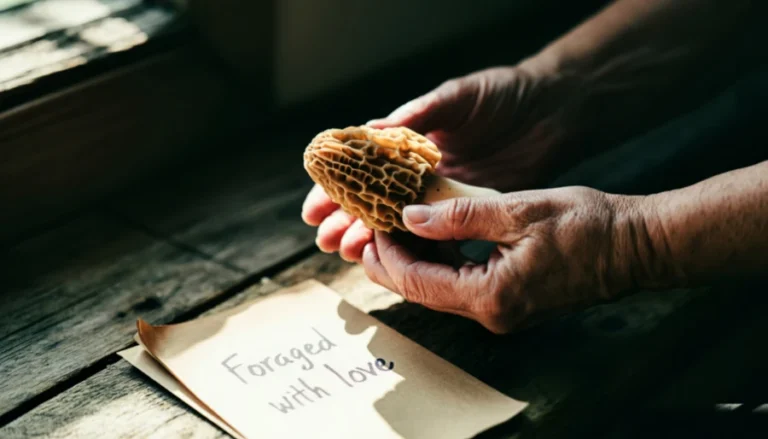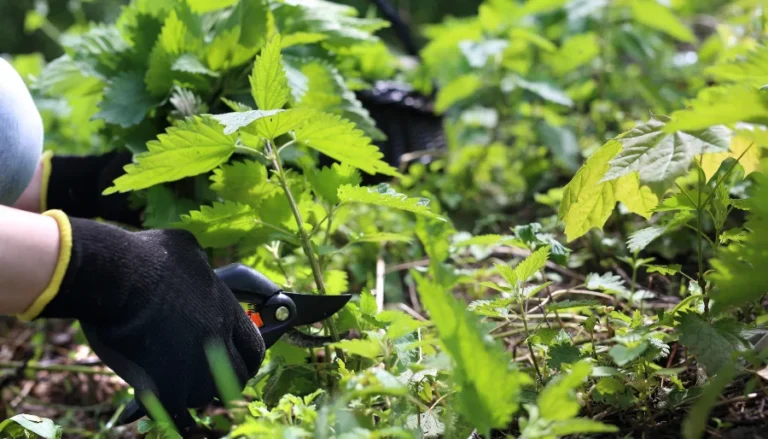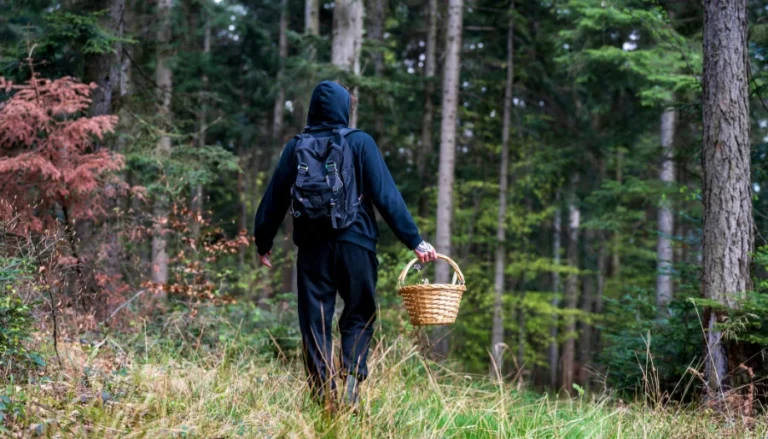Some foods hide in plain sight. These five wild mushrooms are one walk away from your skillet and often sell for more per pound than supermarket steak. You’ll get exact seasons, habitats, ID cues, common lookalikes, safe harvesting tips, and simple ways to cook them. Read straight through once. Then take it to the woods.
1. Morels

Morels announce spring the way lilacs do. Pitted caps. Hollow stems. A nutty, woodsy aroma that makes chefs grin. Fresh morels commonly sell for around \$25–\$80 per pound depending on region and week of the season, with wholesale averages near the high-20s per pound and retail spikes much higher in hot markets.
Where and when: Late March through May in much of the U.S., later at higher elevations. Search around old apple orchards, dying or dead elms, ash and poplar stands, burn scars from the previous year, and sandy river bottoms after warm spring rains.
How to ID quickly: True morels have a honeycomb cap fully attached to the stem at the bottom and are hollow from tip to base. Slice one lengthwise to check.
Common lookalikes: False morels (Gyromitra, Verpa). They’re not hollow, and their caps look wrinkled or brain-like. Some species contain toxins linked to severe illness. The memory rhyme you’ll hear from old timers is blunt: “It’s not hollow, don’t swallow.”
Best easy use: Pan-fry in butter with a little salt. Finish with a splash of cream or sherry. Always cook morels fully.
2. Chanterelles

Chanterelles are the summer gold of the forest. Apricot scent. Firm flesh that keeps its shape in a pan. Fresh chanterelles often range about $17–$36 per kilogram wholesale and $28–$140 for five-pound retail boxes, and typical single-pound retail offers land near $29–$35 in season. That’s premium pricing for a wild mushroom that fruits by the crate in good years.
Where and when: Summer into early fall. In the Pacific Northwest, check mossy conifer forests after warm rains. In the East and South, watch oak, beech, and hemlock woods. They pop along moist ridges and seeps and often return to the same spots year after year.
How to ID quickly: Look under the cap. Chanterelles don’t have knife-like gills. They have false gills—blunt, wavy ridges that fork and run partway down the stem. The color runs from yolk to peach.
Common lookalike: Jack-o’-lantern (Omphalotus). It’s poisonous. It has noticeably sharp gills and grows in dense clusters on wood. When you compare side by side, the difference in the undersides is obvious. And when you look overhead, the jack-o-lantern doesn’t have the proper funnel shape as the chanterelles. Learn that one rule and you avoid the main risk.
Best easy use: Sauté in butter or olive oil. Salt late so they brown. Great with eggs, chicken, pasta, and cream sauces.
3. Porcini / King Bolete

Porcini are the meaty, nutty backbone of Italian and French kitchens. In the West, you’ll hear “spring kings” and “fall kings.” Fresh porcini frequently sell in the $30–$60 per pound range at retail, with live offers from U.S. sellers around $30–$67 per pound, depending on grade and timing.
Where and when: Conifer and mixed woods. West Coast spring and fall flushes coincide with mountain storms. Rockies, Sierra, and Cascades are famous. In the Northeast, watch late summer into fall near spruce and hemlock.
How to ID quickly: Thick, white stalk with a brown bun-like cap. No gills—look for a sponge of pores under the cap. Young, firm specimens are best.
Common lookalikes: Bitter bolete (Tylopilus felleus). It looks right but tastes sharply bitter; the pore surface turns pinkish with age and the stem often shows brown netting. Learn that cue and you won’t ruin a pan. Avoid red-pored boletes as a beginner.
Best easy use: Slice thick and sear hard in a dry pan until fragrant, then add butter and thyme. Freeze slices par-cooked for winter risotto.
4. Matsutake (Pine Mushroom)

Matsutake is a lesson in aroma. Think warm cinnamon, spice, and clean forest. Foragers in the Pacific Northwest and across parts of North America ship thousands of pounds each fall. U.S. retail commonly sits around $50–$65 per pound for good grades, while top Japanese lots can soar far higher due to tradition and scarcity.
Where and when: Early fall through early winter. Pine forests, sandy soils, and duff with manzanita or tanoak out West. In the East and Midwest, look in mixed pine stands. Often, fruiting starts with the first strong autumn rains.
How to ID quickly: White gills, stout stem with a persistent ring, firm flesh, and that distinct spicy-cinnamon-pine scent. The cap often stays partly buried in the duff when young.
Common lookalikes: Catathelasma species and other Tricholoma can mimic the shape but lack the classic matsutake perfume. Smell is your ally. Some Amanita species share habitat; if you can’t confirm scent and structure, don’t harvest. Local clubs and field guides help here.
Best easy use: Slice thick and dry-sear to bloom the aroma, then add a little butter or soy. Classic with rice (matsutake gohan) or in simple broths.
5. Black Trumpets

Black trumpets look like forest confetti—dark, fluted, and easy to miss until you “get the eye.” When a patch appears, it can be generous. Prices vary by region and week, but fresh trumpets routinely command premium specialty-market rates and are often listed by foragers alongside chanterelles and porcinis.
Vendors sell them fresh by the pound and prize them dried for their concentrated flavor.
Where and when: Mid to late summer into fall. East and Midwest—oak and beech woods, especially on mossy slopes and near ravines. West—coastal forests with summer humidity pulses. After soaking rains, scan leaf litter very slowly.
How to ID quickly: Vase-shaped, hollow, thin flesh, and dark gray to black. The underside is smooth to slightly wrinkled, not gilled.
Common lookalikes: There are no notorious poisonous twins, which is why many foragers start with trumpets. Still, other vase-shaped mushrooms exist; if a specimen seems off, skip it.
Best easy use: Sweat in butter with shallot. Finish with cream or toss with pasta and parsley. They also dry and powder into a magic seasoning.
How to forage safely and legally
- Learn one species at a time. Carry a regional field guide and join a local mycological society for show-and-tell IDs.
- Confirm with multiple clues. Habitat, season, cap and underside, stem, cut surface, scent. Never rely on one feature.
- Avoid polluted ground. Skip roadsides, industrial sites, and areas that may have been sprayed.
- Know your rules. Many state and provincial lands allow small personal harvests; commercial collecting often needs a permit. Some states allow casual foraging in state forests but require permits to sell. Check before you pick.

Cleaning, storing, and simple preservation
- Cleaning: Brush off debris in the field. At home, use a soft brush or damp towel. A quick rinse is fine for gritty species, dry on towels right after.
- Fridge storage: Paper bag in a ventilated box. Most wild mushrooms keep 2–5 days fresh.
- Freezer: Par-cook porcini and chanterelles in a dry pan, cool, then freeze.
- Drying: Morels and black trumpets dry beautifully. Store in airtight jars and revive in warm water or broth.
5 Wild Mushrooms Worth More Than Steak
Fast, field-safe cues for season, habitat, identification, lookalikes, quick cooking, and storage. Learn one species at a time. Confirm with multiple signs. When unsure, leave it.
Morels
Spring [late Mar–May; later in mountains]
Old orchards, dead or dying elms, ash and poplar stands, sandy river bends, prior-year burn scars after warm rain
Honeycomb cap fully attached to stem; mushroom is hollow from tip to base when sliced
False morels (Gyromitra, Verpa). Not hollow, cap looks wrinkled or brain-like. Rule to remember: if it isn’t hollow, don’t swallow
Pan-fry in butter with salt; finish with cream or sherry; always cook through
Paper bag in fridge 2–3 days; dry to keep for months
Chanterelles
Summer into early fall
Mossy conifer woods in the West; oak, beech, hemlock in East and South; return to the same slopes
Blunt wavy ridges under cap (false gills) that fork and run down the stem; apricot aroma
Jack-o’-lantern (poisonous). Sharp true gills and grows in tight clusters on wood
Sauté and salt at the end so they brown; perfect with eggs, chicken, cream sauces
Paper bag 3–5 days; par-sear then freeze for later
Porcini / King Bolete
West Coast spring and fall; Northeast late summer to fall
Conifer and mixed woods after storms; watch mountain belts
Brown bun-cap, thick white stalk, sponge of pores under the cap (no gills)
Bitter bolete. Pores turn pinkish with age, stem shows brown netting, bitter taste. Avoid red-pored boletes as a beginner
Slice and dry-sear first to drive off moisture, then butter and thyme
Par-cook slices and freeze; dry extra for risotto
Matsutake
Early fall to early winter
Pine and sandy soils; manzanita or tanoak duff in the West; mixed pine stands elsewhere
Firm white flesh, white gills, sturdy ring, distinct spicy cinnamon-pine scent; caps often partly buried
Catathelasma and other Tricholoma lack the classic perfume. Some Amanitas share habitat; if scent and structure aren’t clear, skip it
Thick slices dry-seared, then a touch of butter or soy; great in rice or broths
Paper wrap, change daily; use fast for best aroma
Black Trumpets
Mid summer through fall after soaking rains
Leafy oak and beech woods, mossy slopes, ravines; scan slowly, they hide in litter
Dark gray to black vase that’s hollow; underside smooth to slightly wrinkled
Few serious problems. If a specimen looks off, leave it
Butter with shallot then cream or pasta; dry to powder for a seasoning bomb
Paper bag 2–3 days; dry for long storage
Safety: Confirm with multiple signs. Habitat, season, cap underside, stem, cut surface, scent. If you aren’t sure, don’t pick.
Legal: Know local rules. Personal harvest is often allowed on public lands. Selling usually needs a permit.
Tip: Brush in the field, not the sink. Keep cool and airy. Learn one species well before adding another.
Why these are “worth more than steak”
Short seasons. Wild habitats. Hand-picking. Weather risk. Demand from chefs and home cooks.
More To Discover
- Caring for Your Aging Dog: 8 Health Issues to Watch For And Which Breeds Are Most Susceptible
- Soil Crisis in the Mediterranean: A European Wake-Up Call For Everyone
- The Dark Empire of Cargill: Inside America’s Worst Company and Food Control
- 13 Most Beneficial Insects You Need in Your Garden and How to Attract Them
The result is simple: spot a flush of these five, and you’ve found dinner and value. In peak weeks, the prices you just saw—roughly $25 to $80+ per pound for morels, about $30 per pound and up for porcini, around $29 to $35 per pound retail for chanterelles, and $50 to $65 per pound for matsutake—regularly beat supermarket beef.
A final word on caution
Mushrooms can be wonderfully safe when you know them well, and dangerous when you don’t. Learn the lookalikes listed here. Slice your morels to check they’re hollow. Study the chanterelle undersides carefully to avoid jack-o’-lanterns. Smell your matsutake. Taste a tiny corner of bolete and spit if it’s bitter. When in doubt, leave it in the forest.




















